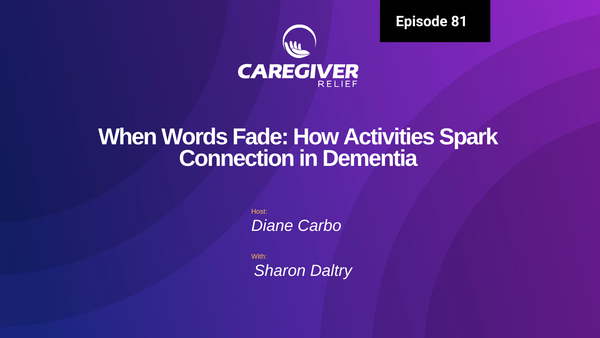When is Hospice Recommended?

Why is Understanding When Hospice is Recommended Important?
Hospice care can be an important component of a patient's healthcare journey when living with a terminal illness. Hospice care focuses on providing comfort and improving the quality of life for patients, and can start before death is imminent. Knowing when to recommend hospice care is important so that patients can receive this care in a timely manner, as well as making sure their families are prepared and have the support they need during this difficult time.
This guide will discuss when hospice is recommended, how it differs from traditional medical care, the benefits of early hospice involvement, and other key pieces of information to consider when dealing with terminal illness.
Hospice care is specialized medical care that focuses on providing comfort and support for those facing terminal illnesses. It is often seen as a compassionate alternative to traditional hospital-based medical care, providing physical and emotional support at a time when most treatment options have been exhausted. Hospice care not only provides physical comfort and care but also seeks to make the end of life more meaningful and dignified for the patient and their families.
Hospice care differs from traditional medical care in several ways. The hospice team is focused on making the patient comfortable rather than attempting to cure the illness. This often involves providing specialized treatments, such as pain management and symptom control. The hospice team also provides emotional and spiritual support for both the patient and their family members. Hospice care is typically provided in the patient's home, allowing them to remain in their familiar environment during this difficult time.
Living with a terminal illness can be an incredibly difficult experience. The physical, mental, and emotional toll of managing the condition can be immense. In these circumstances, hospice care may represent the best option as it provides holistic support for patients and family members throughout the end of life journey.
For those living with a terminal illness, the primary goal is for the patient to achieve comfort and a good quality of life. This can be facilitated through early involvement of hospice care services, which provide additional support in the form of pain management, symptom control, and emotional and spiritual support. It is important to be aware that the timing of when hospice care is recommended may vary according to the disease and the individual’s condition.
Hospice care typically begins when a patient is diagnosed with a terminal condition and is expected to have 6 months or less to live. However, there are also many other factors to consider, such as the patient’s prognosis, current medical condition, and ability to cope with treatments. Ultimately, a patient’s doctor will be the best person to advise when hospice care is appropriate.
By understanding when hospice care is recommended, you can help ensure that your loved one or patient receives the best possible care and support during their difficult time.
Understanding the Role of Diagnosis and Prognosis in Recommendations for Hospice Care
When a terminal illness is diagnosed, medical experts use both diagnosis and prognosis to gauge its severity and effects on a person’s wellbeing. While a diagnosis tells us what the condition is, prognosis examines the expected course of the illness and the patient’s likelihood of recovery.
The prognosis plays an important role when determining when hospice care may be recommended. Medical professionals may decide that hospice care is appropriate when a patient has received a prognosis of six months or less to live. This may be based on an assessment of symptoms or a long-term decline in health. When a patient is approaching the end of life, hospice care may be used to provide comfort and support to their family.
Benefits of Early Hospice Involvement
When living with a terminal illness, it's important to discuss the full range of care options available. One such option is hospice care, which provides a supportive environment for those facing life-limiting illnesses, along with palliative care to ensure comfort and quality of life for the patient. It is recommended that people consider early hospice involvement in order to reap the most benefits from the care provided.
One of the main benefits of starting hospice care early on is that it can improve the patient's quality of life while they are still managing their terminal illness. This is due to the fact that hospice focuses on providing comfort and support, rather than aggressive treatment or interference with natural processes. By beginning hospice care earlier, patients and their families can take advantage of all the resources available in order to manage symptoms and live life to the fullest despite life-limiting illnesses.
Early hospice care can also help to reduce the burden on family members, as it provides a wealth of resources and support that would otherwise need to be provided by family members. Moreover, having a team of medical professionals on hand to help manage symptoms allows family members to focus on being present and care for the patient in meaningful ways.
Ultimately, understanding the potential benefits of early hospice involvement can help people make informed decisions about care options and ensure that they have the best possible quality of life during their remaining time.
Different Hospice Care Models
When exploring hospice care, it is important to understand the different model options and their implications. Generally, there are four main levels of hospice care, each catering to the specific needs of the patient:
- Routine Home Care: This level of care is designed to provide comfort and medical care to patients in their home. This may include physical therapy, nursing assistance, and home health aides to manage pain and symptoms.
- Continuous Home Care: This category covers special situations where the patient may need additional care they cannot receive at home, such as pain management. This option may also cover situations where more frequent visits from a healthcare provider are needed.
- Respite Care: This level of hospice care provides a break for the primary caregivers of the patient in hospice. This may involve family members taking turns to care for the patient or, in some cases, the patient may be temporarily transferred to a hospice or nursing facility.
- Inpatient Hospital Care: This type of hospice care is used for short-term symptom relief or when the patient is unable to receive care at home.
It is important to note that each of these models may be adjusted or combined to better address the specific needs of the patient. The patient’s doctor or hospice team will work with the family to determine which model is best for them.
Signs that indicate it may be time for hospice
Deciding when to start hospice care can be difficult and is a very personal decision. There are certain medical milestones or conditions that may indicate that it is time to start hospice care.
Some of these indicators include:
- When the patient experiences frequent hospitalizations or nursing home stays
- When the patient or their family feels that comfort care is now the primary need
- When a doctor or healthcare provider makes the recommendation
- When the patient has difficulty responding to treatments or medications
- When the patient’s mental or physical condition worsens
It is important to remember that hospice care does not hasten death, it simply allows a patient to live the best life possible while facing difficult choices. Recognizing these signs and starting end-of-life conversations early on can help ensure that the patient’s wishes and needs are respected and they are receiving the best care possible in their circumstance.
Understanding the Implications of Hospice Care
When considering hospice care, it is important to understand the implications that this type of care can have on both the patient and their family. With hospice care, patients move towards a focus on comfort and symptom relief, as opposed to trying to cure or extend life. This can be an emotionally difficult shift for both the patient and family to accept and prepare for.
The transition from traditional medical care to hospice care is often a difficult decision to make, and there are things that both the patient and their family can do to ease the process. One way is to educate themselves on the different aspects of hospice care, such as palliative care, in-home and facility based options, and financial assistance that may be available.
Having a plan in place for end-of-life care is also important. It is beneficial to discuss the patient’s wishes and goals for comfort care with the hospice team. The plan should encompass both physical and emotional needs, and should involve family members in the decision-making process. Additionally, open communication between the patient, family, and hospice team to ensure everyone is on the same page is key to providing the best possible care.
Explaining the Costs of Hospice
Hospice care is a valuable option that provides comfort and support to those nearing the end of their lives. However, many people don’t understand the cost of hospice care and may feel overwhelmed by the financial aspect of it. Here, we will explain how much hospice care typically costs, and what types of assistance are available.
Hospice care can vary in price depending on the specific services provided. Generally, this type of care is covered by Medicare and Medicaid. For those who are not eligible for these programs, private insurance often covers some of the costs, but it is important to check with your insurer to find out what is covered. If private insurance does not cover the costs, there are other options available, such as grants and charities, which can help to offset them.
In addition to the costs associated with the actual hospice care, there may also be additional fees related to medications, medical supplies, medical equipment, and transportation. Here, too, there are options for covering these costs. Many states offer assistance programs for those who need help paying for medications and medical supplies, and Medicare and Medicaid can often assist with medical equipment and transportation expenses.
It is important to take the time to understand the costs associated with hospice care, and to know what types of assistance are available. With a little bit of research and preparation, you can make sure that you and your family are able to receive the care you need at an affordable cost.
Palliative Care as a Complement to Hospice Care
For many individuals receiving hospice care, palliative care can be an important supplement. Palliative care, like hospice care, is focused on providing comfort and addressing symptoms, but it happens alongside treatments that are intended to prolong life. It is often applied to conditions such as cancer, heart failure, or dementia. Palliative care may include traditional medical services, emotional and spiritual support, home care, and respite care.
The goal of palliative care is to provide relief from the symptoms of a disease, improve quality of life, and help individuals at any stage of an illness live as comfortably as possible. By addressing pain, fatigue, or depression, palliative care can enhance an individual’s ability to enjoy life and to endure therapies, if desired. It is family-centered, with the team of experts working together to support the patient and their family.
For those receiving hospice care, palliative care can offer additional support and comfort. It can provide access to treatments that can sometimes increase quality of life. In this way, palliative care can help to make the transition to hospice care easier for both the patient and their family.
Preparing for Hospice Care
Making the transition to hospice care can be an emotional and challenging process for both patients and their families. To make the transition as smooth as possible, there are some steps you should take.
It's important to speak with your doctor or hospice team about your condition and what to expect during the transition. Ask questions about what services are available from the hospice team and how they will work with your family and other care providers. Be sure to talk to your doctor and the hospice team about any concerns you may have.
You should also talk to your family, friends, and other caregivers to help them understand the implications of hospice care and prepare for the transition. Ensure that everyone involved in your care understands their role in providing support and making decisions.
It may also be helpful to create a document outlining your end of life wishes, such as whether you want to be an organ donor or if you want to be buried or cremated. Make sure your family has access to this document and know your wishes.
Finally, remember to take care of yourself during this transition. Be sure to have moments of respite if possible, and find ways to relax. During this time, it is important to practice self-care and rely on your support system.
Making the decision to pursue hospice care is an important step for those with a terminal illness. It is essential to understand when hospice is recommended, and the potential implications of pursuing this type of care.
You might also like this article:










